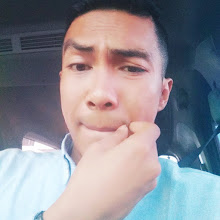In the past, means of transportation used palace of Yogyakarta, whether for traveling, marriage or transporting bodies, is the type of vehicle called a train.
At that time, only the palace has trains, named assortment. The trains were manufactured from other countries such as the Netherlands and Germany.
Trains are now stored in the museum train that is still in the palace of Yogyakarta, precisely the southwestern part of the square to the north, at Jalan Rotowijayan. Museum belongs to the palace which was built with Java architecture is located on the land area of 14,000 square meters.
Currently, the museum has a collection of 23 pieces of horse-drawn carriages. Among these collections, Train Nyai fetish is the most respected.
The names of the other trains are clerics or housekeeper, like Nyai amulets, Kyai Garudayaksa, Kyai Jaladara, Kyai Ratapralaya, Kyai Jetayu, Kyai Wimanaputra, Kyai Jongwiyat, Kyai Harsunaba, Kyai Manik Retno, Kyai Kuthakaharjo, Kyai Kapolitin, Kyai Kus Gading, Kyai Kyai Manik Puspoko or Mondrojuwolo.
"Train Nyai amulets and Kyai Garudayaksa regarded as the most sacred heritage, water used to spray both the train is believed to provide a certain strength," said one museum guard rail, Prawiro.
He menjelaskanya that trains Yogyakarta palace is based on the shape differentiated into three different groups, namely, the two-wheeled open carriage (eg Kapolitin), Type Curricle including an open carriage. Open a four-wheeled wagon (eg Kyai Jongwiyat, Landower, Landower Wisman, Landower Surabaya, Kyai Manik Retno, Kyai Jetayu, Bedoyo Permili)
Four-wheel covered wagon (eg Nyai amulets, Kyai Garudayaksa, Kyai Wimanaputra, Kyai Harsunaba, Kyai Kuthakaharjo, Puspoko Kyai Manik, Kyai Kus Gading). 3rd train type is a vehicle for the Sultan's family.
The trains belonging to the Sultan Palace is a European-type trains; K Coupe, Phaeton, Berline, Landau, ala Glaslandauer Daumont. Landau and Glaslandauer ala mode Daumont is a train that portion of the roof can be opened and closed. Type Vis-a-Vis is a train that has no roof. While type Phaeton is an open carriage.
Forms also train and its distinguishing function. Sultan first train type used for recreational vehicles. The second type is used several prominent groups such as the sultan's guards, a dance troupe of the palace, and the commanders of the palace soldiers. The third is a special train Sultan and his family. Kyai Ratapralaya made in the village hearse Rotowijayan is specifically for the Sultan who had died. "This train new used twice," he said.
Some heirloom Sultan Palace, among others, the following.
kris
Among heirloom kris Keraton who occupied the most important place is Kanjeng Kiai Ageng Kopek. Keris should only be worn by the Sultan himself, the symbol of his role as spiritual and temporal leader. According to tradition this keris was made at the time of the kingdom of Demak, and once owned by Sunan Kalijaga. In addition, there kris Kiai Kanjeng Joko Piturun which can only be imposed by the crown prince, was Kanjeng Toyatinaban Kiai is a dagger worn by Gusti Pangeran Harya Hangabehi, lelak eldest son of the sultan. Keris Kanjeng Purboniat Kiai should only be worn by Patih Danureja.
Spear
Keraton Yogyakarta in mind there are many forms of eye spear spear varied. There is a three-pronged, nothing like kudi, nothing like chakras, and there is also a form of conventional. Among spears Kagungan heritage palace that is deemed privileged is Kanjeng Kiai Ageng Plered. The spear of the neighborhood-Islamic Mataram palace since Panembahan Senopati.
Visible
This term is used to refer to objects that were brought to the sultan accompany royal ceremonies. Visible are as a whole called Kanjeng Kiai Visible Dalem consists of: Dhampar Chariot (= throne), the arrow with his bow, the sword, shield, lar badhak (= sort of big fan of peacock feathers), the Koran, prayer rug, umbrella greatness, and spear. For the royal ceremony, Kanjeng Kiai Visible courtiers brought by six women who are no longer getting your period.
Regalia
This term is used to refer to objects that symbolize heritage properties must be owned by the Sultan in leading the country and its people. As a whole this regalia called Kanjeng kijaji ceremony that consists of many (= goose) symbolizes honesty and vigilance, dhalang (= deer) symbolizes intelligence and agility, Sawung (= rooster) symbolizes virility and responsibility, galing (= peacock) symbolizes grandeur and beauty, hardawalika (= dragon) symbolizes strength, curse (= the money box) symbolizes generosity, handkerchief mas (= box where Sniffer) symbolizes purity, kandhil (= light oil) symbolizes enlightenment, cepuri (= a betel nut), ses containers (= a cigarette), kecohan (= spittoon). The last three items symbolize the decision-making process. Kiai Kanjeng ceremony made of gold when used to accompany the sultan in a royal ceremony brought by 10 virgins.














